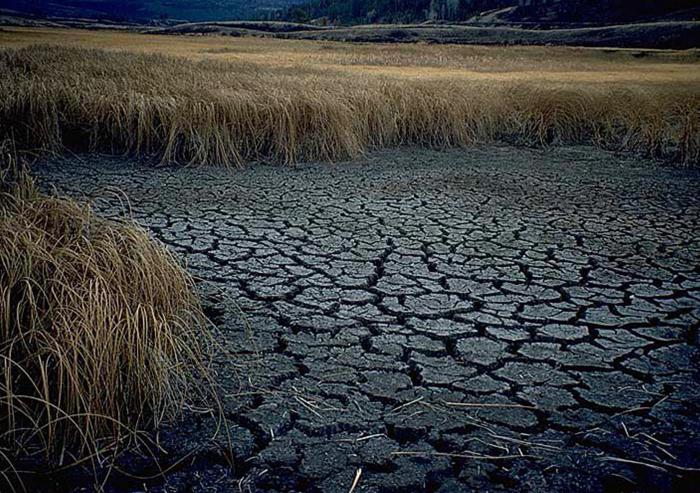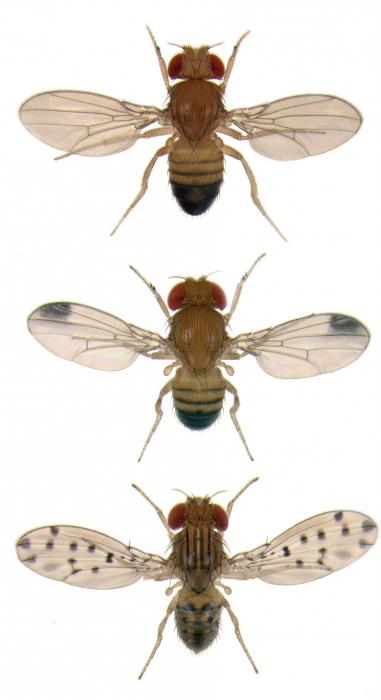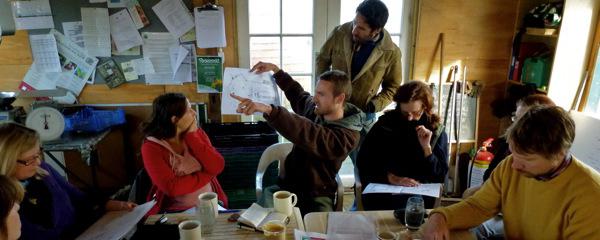Under the action of elementary factors in the gene poolthe frequency of certain genes changes, which leads to a change in the genotype and in the phenotype of the population, and with prolonged exposure to natural selection, its differentiation proceeds.
What is microevolution?
Microevolution - changes in the population under the influence of evolutionary factors, which can lead to a change in the gene pool or even the appearance of a new species.
Factors of evolution can be called any processes or phenomena. Among them we should mention mutations, isolation, gene drift, population waves, which change the genetic makeup.

Characteristics of the "waves of life"
These waves are typical for all living organisms.They can be periodic and non-periodic. Periodic are most often observed in short-lived organisms - in insects, annual plants, as well as in most microorganisms and fungi. The most simple example can be seasonal changes in numbers.
Non-periodic population waves depend ona combination of several complex factors. As a rule, they concern not one, but several species of living organisms in the biogeocenosis, therefore they can lead to radical restructuring.
Among changes in the number of individuals in the populationit should be noted the sudden appearance of certain species of organisms in new areas where their natural enemies are absent. Also, mention should be made of sharp non-cyclic changes in numbers, which are associated with natural "catastrophes" and can be manifested by the destruction of the biogeocoenosis or the whole landscape. Thus, several dry summer periods can change a significant area - to cause the appearance of meadow vegetation in marshes and a large number of dry meadows.

The evolutionary meaning of the "waves of life"
In cases where the number of any populationsharply reduced, there may be only a few individuals. At the same time, their frequency of genes (alleles) differs from that of the original population. If, following a sharp decline in the population, the population is sharply uplifted, then a small group of organisms, which has remained, gives rise to a new outbreak of population growth in the population. That is why it can be argued that population waves affect the gene pool, as the genotype of this group determines the genetic structure of the entire population.
At the same time,a set of mutations in the population and their concentration. So, a certain part of the mutations disappears altogether, and some suddenly grow. If we generalize, then we can say that population waves as an evolutionary factor are extremely important, given the intensive selection are the main supplier of evolutionary material, when rare mutations are substituted for selection.
In addition, the waves of life can temporarilyto deduce a number of mutations or genotypes in another abiotic or biotic environment. Despite this, even a combination of population waves and mutations does not ensure the evolutionary process. You need an action of a factor that affects one direction (this is, for example, isolation).
The effect of isolation on population size

This factor is extremely important in the evolutionaryplan, as it provokes the appearance of new signs under conditions of the same species and does not allow the cross-breeding of different species among themselves. It is worth noting that most often there is geographical isolation. Its essence lies in the fact that the only area is broken, and the crossing of individuals from different parts of it becomes impossible or difficult.
It is worth noting that in an isolated populationmutations randomly develop, and as a result of natural selection, its genotype becomes more and more diverse. In addition, there is ecological isolation and various biological mechanisms that prevent individuals of different types from freely converging. An example would be different preferences regarding the place or time of crossing, as well as, for example, excellent behavior or different structure of the genital organs in animals, which becomes an additional obstacle to crossing.
If we generalize, we can say that different types of insulation contribute to the formation of new species, but at the same time help preserve the genetic structure of the species.
Drift of genes

Random change in the number of genes in anyA small population size can have noticeable consequences, since it can lead to a change in the frequency of alleles. Random changes in the frequency of alleles are called gene drift. This process is non-directional. It was first discovered by geneticists N. P. Dubinin and D. D. Romashov.
Confirmation regarding drift randomnessgenes got S. Wright. In the laboratory, he crossed drosophila males and females who were heterozygous for a particular gene. After that, progeny were obtained with a concentration of the normal and mutant gene, which was 50%. After several generations, some individuals became homozygous for the mutant gene, some even lost it, and another part of the individuals had both the mutant and the normal gene.
It should be noted that even with reducedviability of mutant individuals and subject to the influence of natural selection, the mutant allele was able to completely crowd out the normal one, causing specific population waves.
Etiology of population waves
Из всех причин, которые способны повлиять на the quantitative characteristics of the population, the leading place is taken by climatic conditions, biotic factors are thus relegated to the background. With low species diversity, the number of individuals in the population depends on the weather, the chemical composition of the environment, as well as the degree of pollution.
It should be noted that the causes of population waves, which predetermine the change in population size, depend on its density or influence independently of this parameter.
Abiotic and man-made factors likegenerally independent of population density. Biotic influence is more dependent on it. It should be noted territorial behavior, which in the course of evolution is the most effective mechanism that inhibits the growth of the number of individuals in the population. Thus, the activity of individuals is limited to the appropriate space. With increasing numbers, intraspecific competition for resources or direct antagonism (attack on competitors) develops.

Features of change in the number of populations
Many environmental processes associated withthe distribution of the population over the area or with a local outbreak of numbers resembles peculiar waves, which, as mentioned above, are called “waves of life”. A typical example is the sudden increase in the number of insect pests in a limited forest area. Under favorable conditions, insects are capable of capturing more and more new territories, which is a typical picture of an increase in their density or the spread of a so-called population wave. Knowing the characteristics of mobility and certain population characteristics, one can easily calculate the propagation velocity of this wave and possible control methods.

In addition, it is necessary to mention the population-genetic waves, with the help of which they describe the nature of the spread of a particular gene in the area that a particular population occupies.
The mechanism of action of population waves
Population waves can be characterized withusing a model example. So, in a closed box there are 500 black and the same number of white balls, which corresponds to the frequency of P-0.50 alleles. If you remove 10 balls at random and assume that 4 of them are black and 6 are white, then the frequency of alleles will be 0.40 and 0.60.
If you increase the number of balls by 100 times,adding 400 blacks and 600 whites, and then again randomly picking up any 10, then it is likely that their color ratio will differ significantly from the original, for example, 2 blacks and 8 whites. The frequency of the alleles will be, respectively, P-0.20 and P-0,80. If we take the third sample, then there is a probability that 9 white balls from 10 chosen ones will be extracted, or even all of them will have a white color.
By this example, it is possible to judge about random fluctuations in the frequency of alleles in natural populations, which can reduce or increase the concentration of a particular gene.








